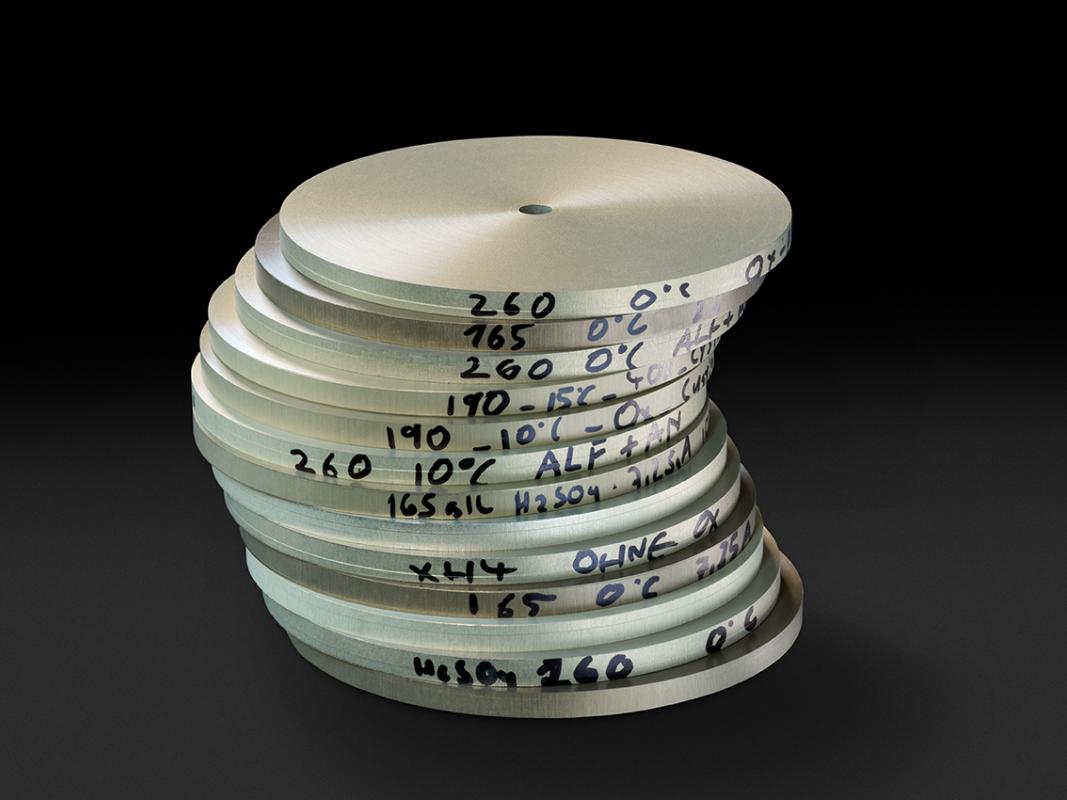Questions? Answers!
Can all types of aluminium be anodized?
An oxide layer can always be formed. This layer varies greatly however in quality and properties. Often only a very small number of alloys is suitable for a planned application. We will be pleased to advise you on this. Look also at our material recommendations which are based on our practical experience in this field.

Can anodized layers be removed again?
This is no problem, but dimensional changes will need to be taken into consideration.

Are anodized surfaces suitable for use in contact with food?
Yes, but only if non-pigmented.

Are anodized and hard-anodized surfaces proof against alcohols and acetone?
Long-term resistance to these substances is shown.

Are the pigments used stable under ultra-violet radiation and thus suitable for unlimited use in the open air?
Each pigment has a different stability to UV radiation. The least good choices are colours such as red, blue, green or orange. The most stable are black and gold.

Can all alloys be chemically polished?
The environmentally friendly process in our plant only allows the use of copper-free alloys.

Can parts which have already be anodized once be anodized again?
No, they can’t.

Can pickling be used to remove exactly the amount of material which will later be built up during anodising?
This is theoretically possible, but in practice should only be done in case of emergency. The condition of pickling baths varies and also pickling rates alter with increasing time in the bath. In general the build-up of material should be taken into consideration at the design stage.

Can blind holes be anodized?
Blind holes are partially shielded from current (Faraday's Law). The deeper inside a hole, the thinner will be the layer formed. If there is an air-bubble in the hole, no anodizing at all will take place.

Can a coarse grain structure be improved by anodizing?
A coarse grain structure is the result of incorrect temperature control during the manufacture of the aluminium. Unfortunately it normally only becomes visible during pickling. As a result many customers believe it is a result of faulty anodizing. In some cases the problem can be alleviated by a special shot-blasting process followed by chemical polishing.
General
The workpieces shown below were all machined using different hard anodising processes. All of them meet the applicable standards, but the quality of wear resistance varies dramatically. For example, the best samples would perform their function for years, the worst would be destroyed after weeks. The real quality cannot be seen visually - surface technology is therefore also a matter of trust...







